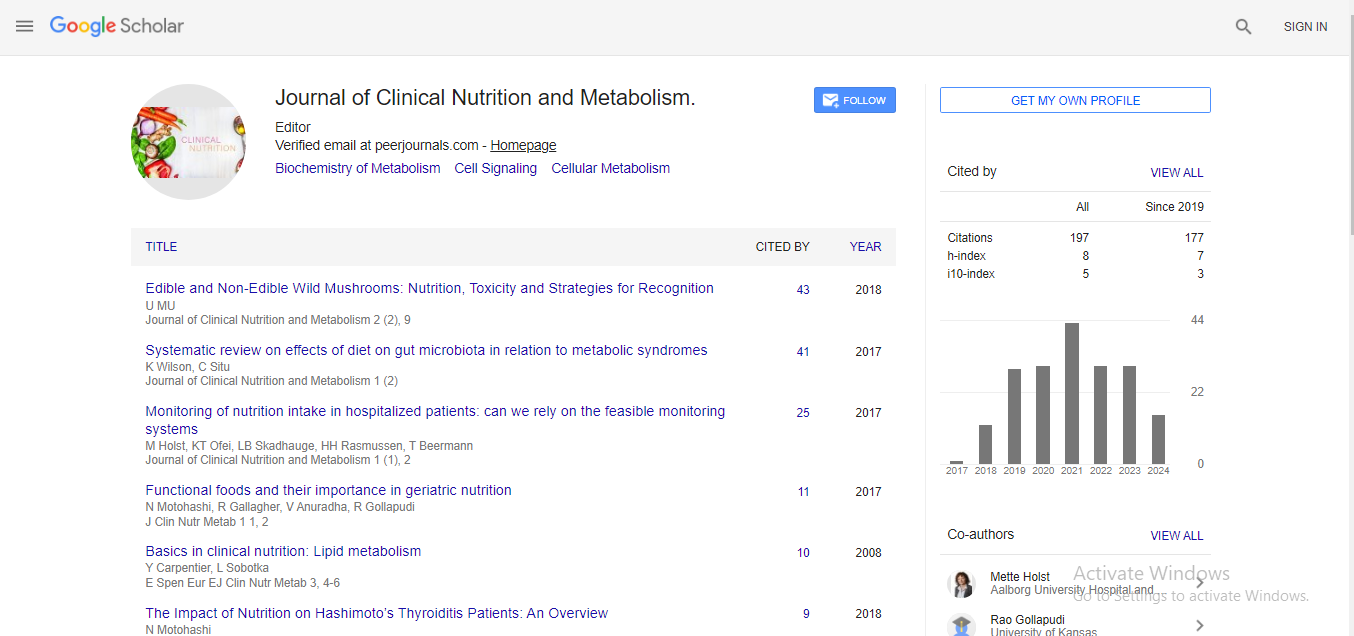Annual Meeting Abstract, J Clin Nutr Metab Vol: 4 Issue: 3
Systematic review and meta-analysis of Centella asiatica (L.) Urb. on mood and cognitive function- Panupong Puttarak- Prince of Songkla University
Panupong Puttarak Prince of Songkla University, Thailand
Keywords: mood and cognitive function
Statement of the Problem: Centella asiatica (L.) Urb. Has a long history as herb for mind tonic, mental issues and memory enhancing in Asia. A variety of clinical studies of C. Asiatica on mood and cognitive effect were reported. However, no summarizes the overall proof of C. Asiatica on cognitive feature. Methodology & Theoretical Orientation: This have a look at ambitions to decide the results of C. Asiatica on temper and cognitive characteristic. International and Thai databases were searched for clinical research investigating C. Asiatica. Outcomes of hobby were any measure on temper and cognitive function. Mean changes of the results from baseline had been in comparison by way of standardized suggest difference. Findings: Eleven randomized managed trials regarding 642 patients have been included. C. Asiatica could boom alert rating [SMD: 0.71 (95%CI; 0.01 to 1.41); p = 0.046, I2 = 30.5%] and decrease anger rating at 1 hour after remedy [SMD: -0.81 (95%CI; -1.51 to -0.09); p = 0.026, I2 = 36.6%]. Overall consequences indicated no big differences among C. Asiatica and comparators on each cognitive domain besides a evaluation of mixture products which can decrease time of problem fixing in executive characteristic domain [SMD: -0.77 (95%CI; -1.26 to -0.27); p = 0.002, I2 = 0.0%] in comparison with a comparator. No observe reported detrimental effect of C. Asiatica. Conclusion & Significance: C. Asiatica could boom alert and reduce anger rating. However, C. Asiatica has no clinical effect on cognitive feature. Future well-designed medical trials of standardized C. Asiatica are still needed. Selenium-wealthy rice grass juice improves antioxidant residences and nitric oxide inhibition in macrophage cells. Antioxidants. Cognition can be described as the organization of mental strategies that cause know-how thru thought, experience, and the senses. Cognitive feature consists of various domain names including interest and concentration, executive characteristic, facts processing speed, language, visuospatial skill, running memory, verbal reminiscence, and visual memory1. Diseases, drugs, chemicals, genetics, and getting old can all reason declines in cognitive capability main to cognitive impairment. Cognitive impairment may bring about dementia or Alzheimer’s disease. Acetylcholinesterase inhibitors (AChEIs) had been advocated as a first-line treatment for Alzheimer’s disease. However, AChEIs are also related with diverse adverse events. To keep away from these, herbal drugs which include Ginkgo (Gingko biloba L.), Curcuma longa L., Melissa officinalis L. And Bacopa monnieri L. Wettst have been more and more used as options to prevent or treat cognitive impairment. Centella asiatica (L.) Urban., (own family Apiaceae), generally known as asiatic pennywort or gotu kola, is a plant that has been used as an AChEI opportunity. It is a perennial, herbaceous creeper with kidney fashioned leaves generally located and cultivated in Asian countries. It has been used considering ancient times in Ayurvedic traditions beneath the call of mandukaparni. This plant features as an herb, spice, vegetable, and juice in addition to in nutraceutical and cosmetic merchandise. C. Asiatica has been delivered to the Thailand National List of Essential Medicines for its antipyretic and wound recovery properties. It has also been decided on as one of the five medicinal flowers to be evolved as a “champion herbal product” to generate income for the country. C. Asiatica contains several lively substances with the most crucial institution being pentacyclic triterpenes, which includes asiaticoside, madecassoside, asiatic acid, and madecassic acid8. C. Asiatica and its pentacyclic triterpenes are commonly used for their antipyretic, wound recovery, anti-wrinkle, and antiinfection effects. Important indications for C. Asiatica in Ayurveda encompass its use for cognitive homes as a mind tonic, in the treatment of intellectual disorders, and as a reminiscence-improving agent. C. Asiatica was proven to improve neuronal morphology
 Spanish
Spanish  Chinese
Chinese  Russian
Russian  German
German  French
French  Japanese
Japanese  Portuguese
Portuguese  Hindi
Hindi 